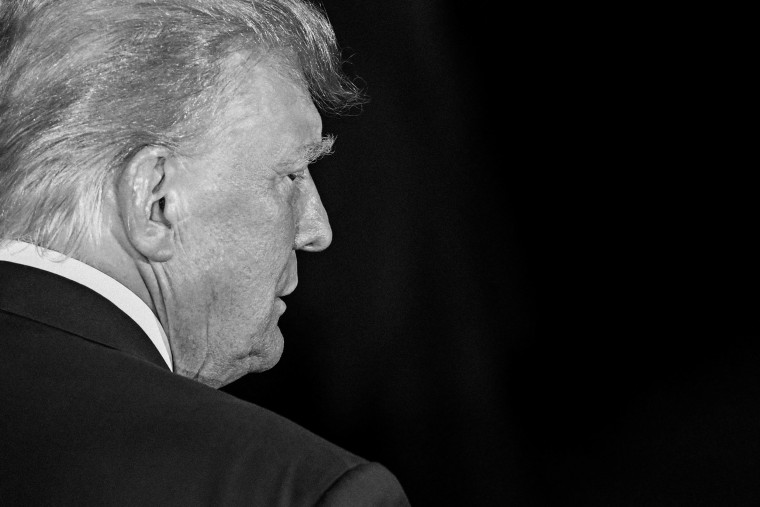We knew that special counsel Jack Smith’s office had indicted Donald Trump in the classified documents case, but until the actual indictment was unsealed, we didn’t have the details about the precise charges, the number of counts, and the kind of evidence federal prosecutors had assembled against the former president.
It was against this backdrop that NBC News reported this afternoon:
The indictment outlining federal charges against former President Donald Trump for alleged mishandling of classified documents has been unsealed, revealing he’s been charged with 37 felony counts. The document released Friday, which also names Trump aide Walt Nauta, outlines criminal charges related to the over 100 classified documents federal agents recovered from Trump’s Florida resort in August of last year.
The full, 49-page document is available online, and I think it’s fair to characterize it as absolutely devastating. Assorted details from the document:
The former president allegedly kept sensitive documents that included information “regarding defense and weapons capabilities of both the United States and foreign countries; United States nuclear programs; potential vulnerabilities of the United States and its allies to military attack; and plans for possible retaliation in response to a foreign attack.”
The indictment added, "The unauthorized disclosure of these classified documents could put at risk the national security of the United States, foreign relations, the safety of the United States military, and human sources and the continued viability of sensitive intelligence collection methods."
We could, at this point, effectively stop here, since these two paragraphs are among the most brutal I've ever seen about a former American president. But the document kept going.
Trump also allegedly stored boxes containing classified documents in a variety of unsecured locations at Mar-a-Lago, including “a ballroom, a bathroom and shower, an office space, his bedroom, and a storage room.”
In the hopes of obstructing the process, the Republican, among other things, also allegedly suggested that his attorney lie to the FBI, directed an aide to move boxes in order to conceal them, and suggested that his attorney “hide or destroy” documents in the hopes of defying a federal subpoena.
Trump also allegedly pointed to highly sensitive documents while telling an associate, “As president, I could have declassified, but now I can’t.”
The former president also twice allegedly showed classified materials to people who lacked security clearances, including a representative of his political action committee.
The indictment also pointed to an alleged incident in which classified materials — “releasable only to the Five Eyes intelligence alliance” — were carelessly spilled onto the floor of a storage room that was accessible by the workers at his glorified country club.
Trump also allegedly failed to let the Secret Service know “that he was storing boxes containing classified documents at the Mar-a-Lago club.”
Apparently eager to twist the knife a bit, the indictment also reminds readers about the former president’s rhetorical record:
- On August 18, 2016, TRUMP stated, “In my administration I’m going to enforce all laws concerning the protection of classified information. No one will be above the law.”
- On September 6, 2016, TRUMP stated, “We also need to fight this battle by collecting intelligence and then protecting, protecting our classified secrets. ... We can’t have someone in the Oval Office who doesn’t understand the meaning of the word confidential or classified.”
- On September 7, 2016, TRUMP stated, “[O]ne of the first things we must do is to enforce all classification rules and to enforce all laws relating to the handling of classified information.”
- On September 19, 2016, TRUMP stated, “We also need the best protection of classified information.”
- On November 3, 2016, TRUMP stated, “Service members here in North Carolina have risked their lives to acquire classified intelligence to protect our country.”
- As President of the United States, on July 26, 2018, TRUMP issued the following statement about classified information: "As the head of the executive branch and Commander in Chief, have a unique, Constitutional responsibility to protect the Nation’s classified information, including by controlling access to it. ... More broadly, the issue of [a former executive branch official’s] security clearance raises larger questions about the practice of former officials maintaining access to our Nation’s most sensitive secrets long after their time in Government has ended. Such access is particularly inappropriate when former officials have transitioned into highly partisan positions and seek to use real or perceived access to sensitive information to validate their political attacks. Any access granted to our Nation’s secrets should be in furtherance of national, not personal, interests."
With quotes like these in mind, there can be little doubt that the former president knew what he was doing was wrong. He did it anyway.
I’m certain that Trump’s partisan allies and Republican-aligned media will continue to defend him. But after reading the unsealed indictment, I’m less sure how.

